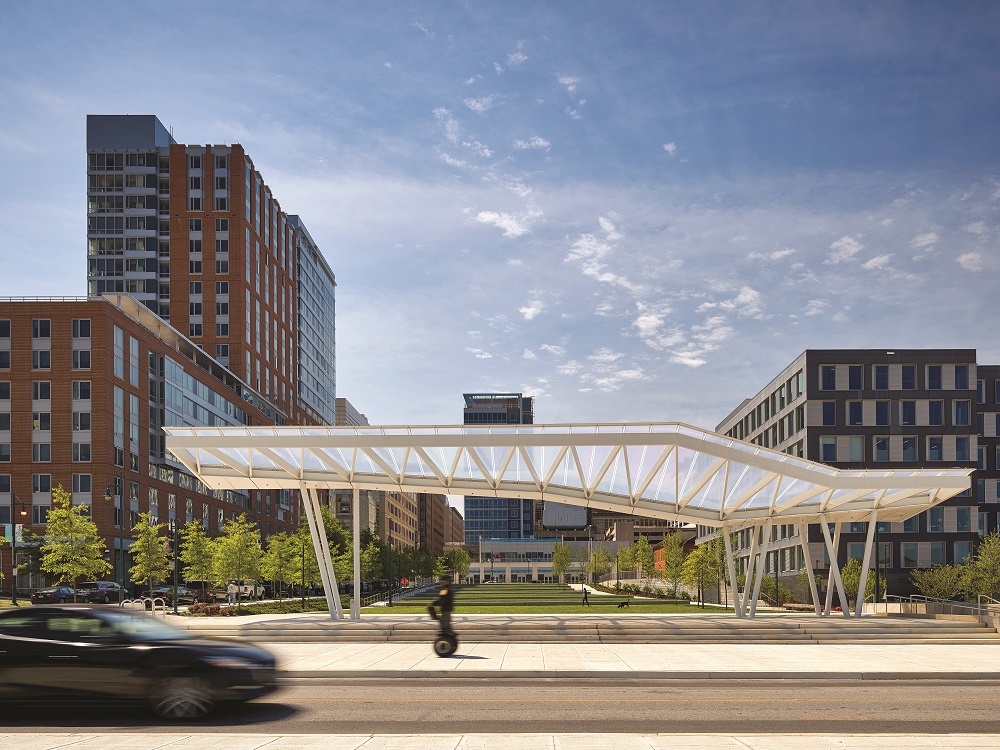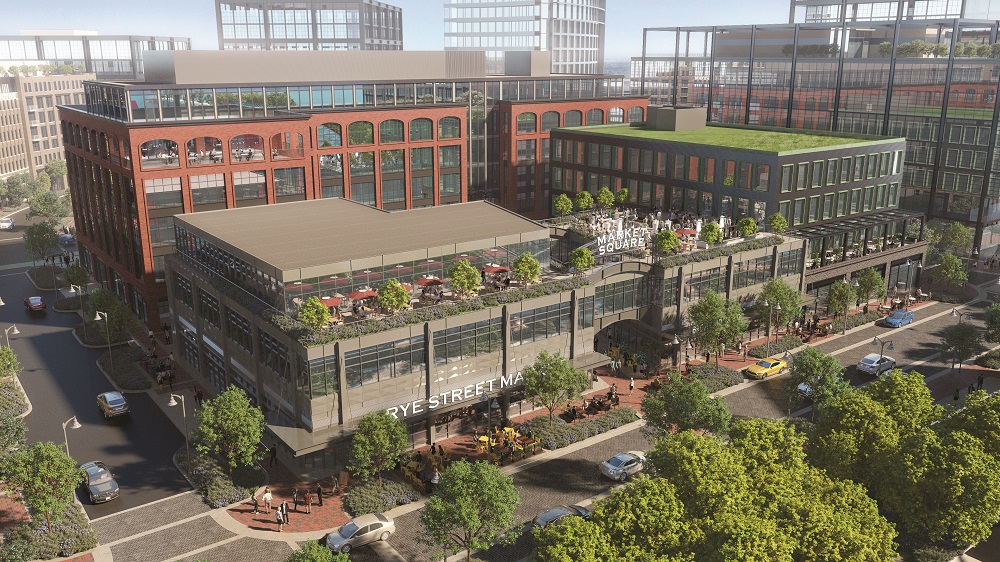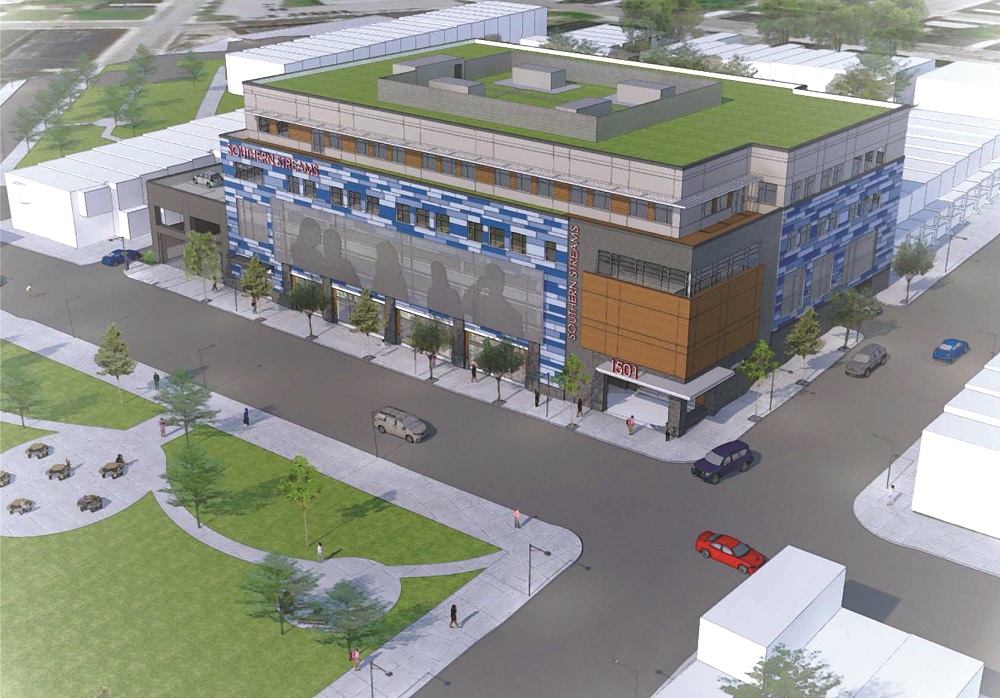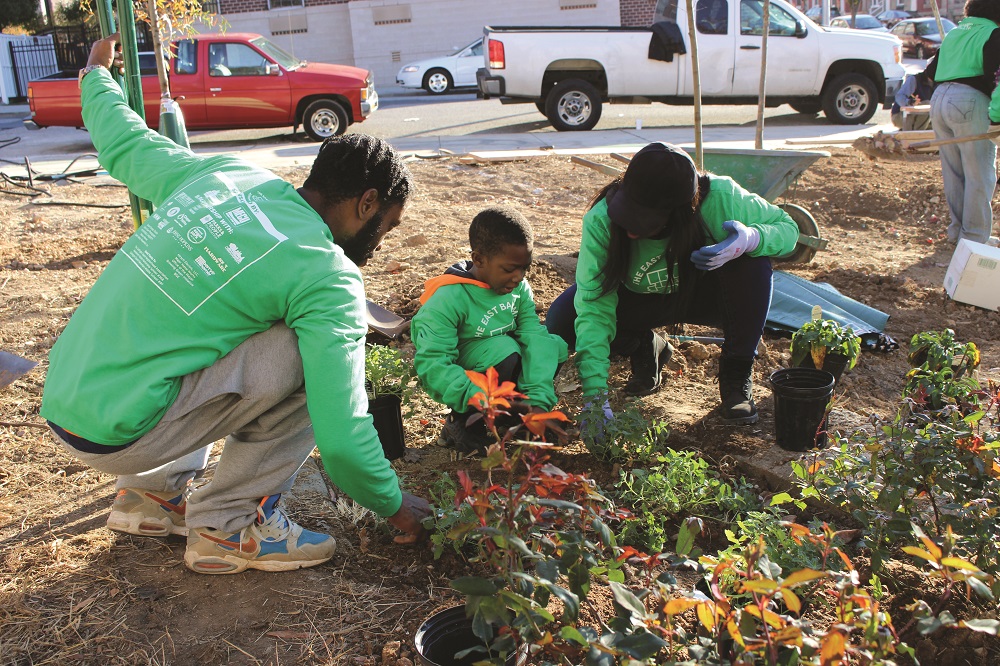Community engagement is changing the shape, success and impact of developments

By some descriptions, it was the deal that changed the paradigm of development in Baltimore. And it was due largely to the efforts of the South Baltimore Six.
The Port Covington Development Team had encouraged leaders of six surrounding neighborhoods to band together (into what became SB6) and hone ideas of how the massive redevelopment could benefit area residents.
Through the ensuing string of large public meetings and small group discussions, “we were introduced to tremendous knowledge and expertise that existed in the community,” said Marc Weller, Founding Partner of Weller Development, the lead developer of Port Covington. “Without those meaningful interactions we had with communities, we would have been flying blind and making assumptions that probably would not have been not accurate.”
Those discussions and that expertise ultimately helped shape the City-wide Benefits Commitment – the paradigm-changing agreement by Sagamore and its Port Covington Development partners to spend $100 million on workforce development initiatives, education programs, college scholarships and improved recreation facilities. The agreement included a mandate that 30 percent of onsite infrastructure work and permanent jobs would be filled by Baltimore City residents, and another mandate that 20 percent of new residential units would be income restricted, including for very low- income individuals.
On a growing number and variety of projects, the development community is engaging in deeper collaborations with adjoining neighborhoods and area non- profits. Those partnerships, participants say, are producing more successful development projects and expanded, appropriate services and amenities that ultimately create healthier communities.
Leaders at Tradepoint Atlantic knew they would face community skepticism and outright opposition when they proposed redeveloping the former Bethlehem Steel site at Sparrows Point. Multiple developers
had preceded them and made promises to the community only to fail within a few years. The brownfield site was fraught with environmental hazards. And Tradepoint was intending to break with community legacy and not restart a steel operation.
 Like Port Covington, Tradepoint Atlantic identified key community leaders and influencers and brought them together in an advisory group. Through regular consultations, a semi-annual community open house, immediate personal communications when issues arose (such as an accidental release of naphthalene that sent a foul smell through the community) and the inclusion of community requests in development plans (including retail and recreation space), the company gained powerful support for its development.
Like Port Covington, Tradepoint Atlantic identified key community leaders and influencers and brought them together in an advisory group. Through regular consultations, a semi-annual community open house, immediate personal communications when issues arose (such as an accidental release of naphthalene that sent a foul smell through the community) and the inclusion of community requests in development plans (including retail and recreation space), the company gained powerful support for its development.
“We went from people being angry and screaming at us during the first open houses to people now standing up and saying how wonderful we are. It’s almost a cheer-fest,” said Aaron Tomarchio, Senior Vice President of Administration and Corporate Affairs.
That support has helped the company get through permitting and other government deliberations more easily, and also attract tenants.
“Companies are sensitive to political and community climates,” Tomarchio said. “So when you have those community cheerleaders, you are able to go to market on a much stronger footing and make the case of why they should invest here.
At the corner of East Biddle and North Chester streets, Cross Street Partners had an interesting property but a development challenge. Previous notions of turning the long-abandoned Hoen Lithograph Building in a food commissary for Baltimore City Public Schools or workforce housing for Johns Hopkins Hospital had never taken off. When Cross Street connected with community members and mission-driven nonprofits, however, the project became viable.
“The project had to focus not just one rehabilitating one building, but the community surrounding the building,” said Adam Rhoades-Brown, Project Development Manager. “Hoen was surrounded by 50-60 percent vacant rowhomes…so a lot of community members wanted to see the neighborhood return to its former glory when the houses were occupied and affordable and people were working.”
Cross Street formed partnerships with Strong City Baltimore, a nonprofit that offers workforce training, and ABC Baltimore, which decided to create a construction trades training center on site. It got involved in community projects, including converting a vacant lot to a small park and turning an underpass into a public art project.
“The groundbreaking for Hoen Lithograph was so moving,” said Kat Sabo, President of Budova Engineering, a subcontractor on the renovation. “A local children’s choir sang and you could see how much potential that building has to transform that community.”
 Two blocks away, Trout Daniel and Associates is currently leasing a project that’s also the result of intensive collaboration among community members, nonprofits and the development community. Southern Streams Health and Wellness Center embodies the philosophy that “we must restore people as we rebuild properties,” said Bishop Dante Hickman Sr. of Southern Baptist Church, which is leading the development effort.
Two blocks away, Trout Daniel and Associates is currently leasing a project that’s also the result of intensive collaboration among community members, nonprofits and the development community. Southern Streams Health and Wellness Center embodies the philosophy that “we must restore people as we rebuild properties,” said Bishop Dante Hickman Sr. of Southern Baptist Church, which is leading the development effort.
The $33-million project has already secured a major tenant – a Johns Hopkins clinic. Now, the project team is seeking out an array of tenants to fill out the holistic wellness services envisioned, including early childhood services, behavioral health counselling, nutritional counselling, head start education, financial management education, soft skill and job skill training, and a library. Hickman estimates that Southern Streams will support 200 to 300 jobs and empower area residents to fill many of those.
“Prospective tenants are really responding to this opportunity… It’s an attractive model for development that could be replicated throughout the region,” said Michael Gaines, Senior Associate at Trout Daniel and Associates.
Such public-private collaborations, he said, are also spurring other developments nearby.
“Over the next five to 10 years in the corridor of North Chester and Gay Street, you will see food markets, other retail and greater density of residential and commercial development,” Gaines said.
“More developers need to take this collaborative approach,” said Elaine Asal, a Senior Associate and Design Strategist at Gensler. Asal was part of the design team for Eager Park which won NAIOP Maryland’s 2018 Award of Excellence for Best Community Impact.
The community engagement process for Eager Park did more than bring additional perspectives into the planning process. It brought in new partner organizations, workers, funds and resources which improved the thoughtfulness of the planning and the quality of the final product. It also fostered a deep sense of ownership of the park among residents which has spurred numerous people to physically care for the park and expand programming onsite.
Furthermore, local governments and residents have come to expect heightened levels of collaboration and positive community impact, Asal said. “They have developed a deeper understanding, a more conscientious perspective on the impact of development on neighborhoods so they are looking to developers to have a much more sophisticated community engagement approach.”

Originally published in November/December 2019 NAIOP-MD InSites.